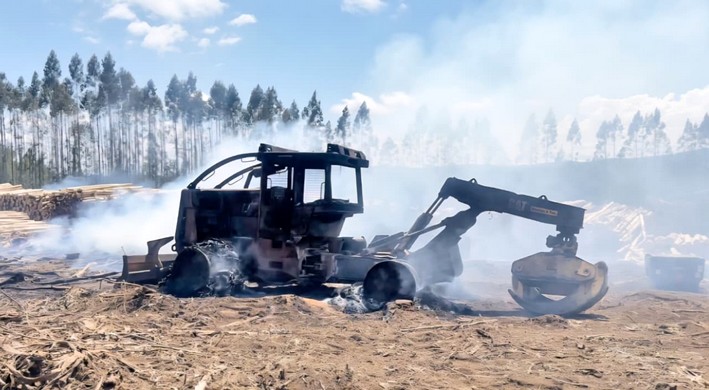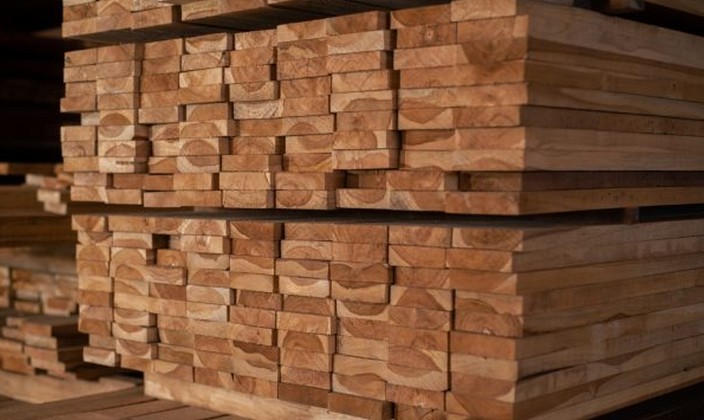Climate Change Law and Forest Monocultures
Pablo Donoso Hiriart, Professor of Forestry, Forest Ecology, and Community Development at the Universidad Austral de Chile
On Monday, June 13, the Framework Law on Climate Change was published in the Official Gazette. Its objective (Article 1) is to address the challenges posed by climate change, transition toward low greenhouse gas emissions development to achieve and maintain carbon neutrality by 2050, adapt to climate change, and fulfill the international commitments made by the State of Chile on this matter. Undoubtedly, this is excellent news. However, its approach toward monoculture plantations is concerning.
First, it defines (Article 3, letter p) "Climate Refuges" as "those geographic areas that may have the capacity to mitigate the negative effects of climate change, ensuring the viability of their ecosystems and species, or maintaining or restoring their role as carbon sinks and climate regulators," stating that "Under no circumstances will monoculture plantations be considered climate refuges." Additionally, the Long-Term Climate Strategy (Article 5), an instrument recognized in the Paris Agreement, outlines the general guidelines the country will follow in a cross-cutting and integrated manner, considering a 30-year horizon for achieving the law's objectives. The Strategy will include various fundamental aspects, such as (Article 5, letter c) "Levels of greenhouse gas absorption and storage to achieve and maintain the goal of Article 4... (which sets the mitigation target of achieving greenhouse gas emissions neutrality by 2050 at the latest)... establishing guidelines related to ecosystem conservation, ecological restoration, afforestation and reforestation with native species, technologies and practices for carbon capture and storage, including considerations on ocean-based risk reduction options and their mitigation effects. The guidelines will not incentivize the planting of forest monocultures."
Why this approach regarding forest monocultures? Under the logic of this law, the lack of incentives for forest monocultures is based on the assertion that they do not contribute to carbon capture (climate change mitigation) or adaptation to climate change. Certainly, a short-rotation plantation (whether afforestation or reforestation, as mentioned in this law), harvested at 20 years or earlier through clearcutting, has a very low average level of sequestered carbon compared to an older forest or plantation that is not clearcut. The current model of forest monoculture plantations—with large continuous plots, short rotations, extensive clearcutting, and only radiata pine or eucalyptus, partly established after replacing native forests—has justifiably generated a negative public perception of the industrial plantation model. The idea that monocultures themselves are the problem, rather than how they have been managed, has become entrenched. This perception is now being reflected in the law.
The Chilean forestry sector has systematically ignored national and international research on proper silviculture and plantation management, including the management of monospecific plantations. Generally, it would be more advisable for the environment—and even for plantation growth—to include multiple species from the outset. Landscape-level species diversity, in mosaic patterns, is also important, and certainly not at the expense of replacing native forests. In this context, the use of monocultures to contribute to climate change mitigation and adaptation makes more sense if it promotes diversity in composition and structure, which is possible with longer rotations, leaving legacies (some trees) at harvest or even serving as the starting point for creating continuous-cover forests.
With these considerations, planting fast-growing native species (and many species in Chile grow remarkably fast thanks to its climate and soils!) that thrive in open fields—such as coihue, raulí, roble, ulmo, or quillay—or even pine and eucalyptus, can lead to productive, diverse, and resilient forest ecosystems that provide many goods and services, including carbon capture to mitigate climate change. This can happen even if these afforestation or reforestation efforts begin, for various reasons, as monocultures. This is achievable, especially through proper silviculture and plantation management, which can also produce timber for construction—thereby contributing to climate change mitigation and carbon neutrality in the construction sector, one of the main carbon emitters into the atmosphere. This is called climate-smart forestry.
This law illustrates that not only has the forestry sector ignored advances in forest science regarding plantations, but public policies are also not always based on science.

















